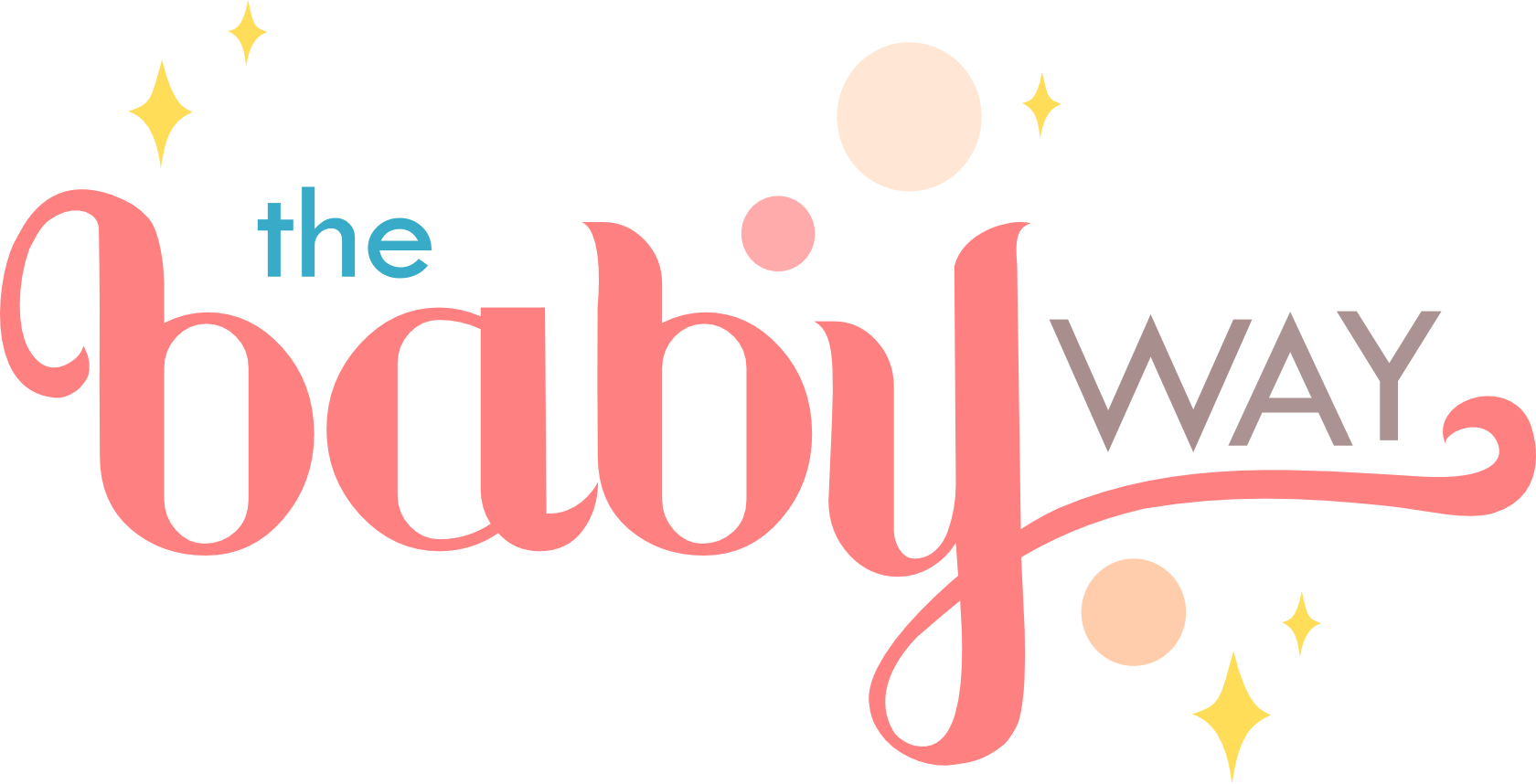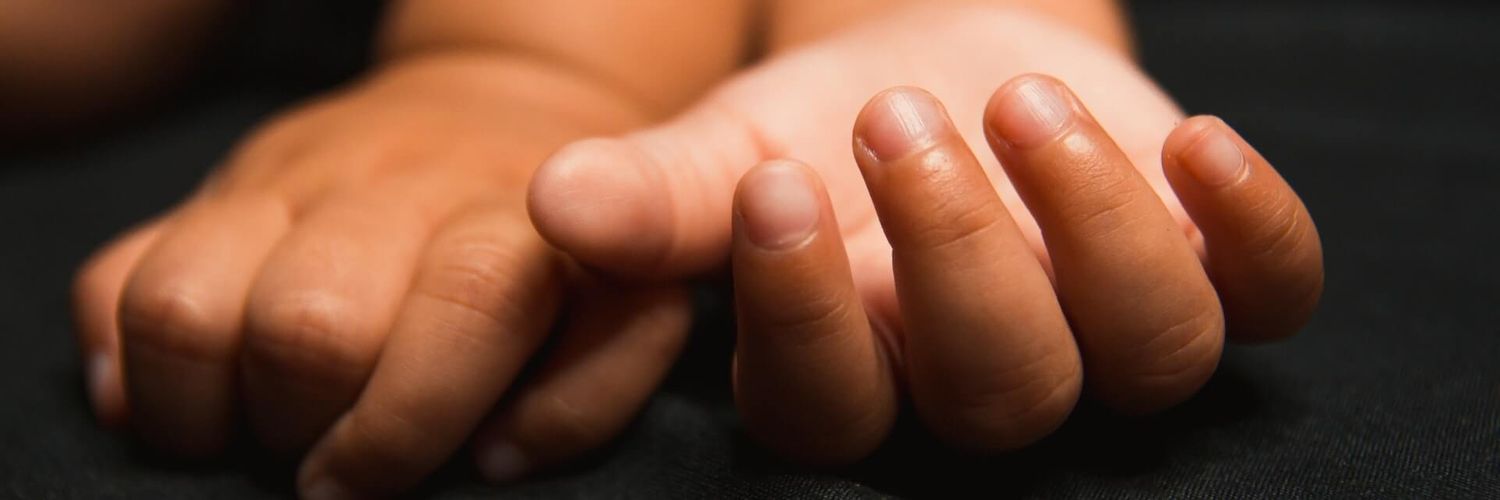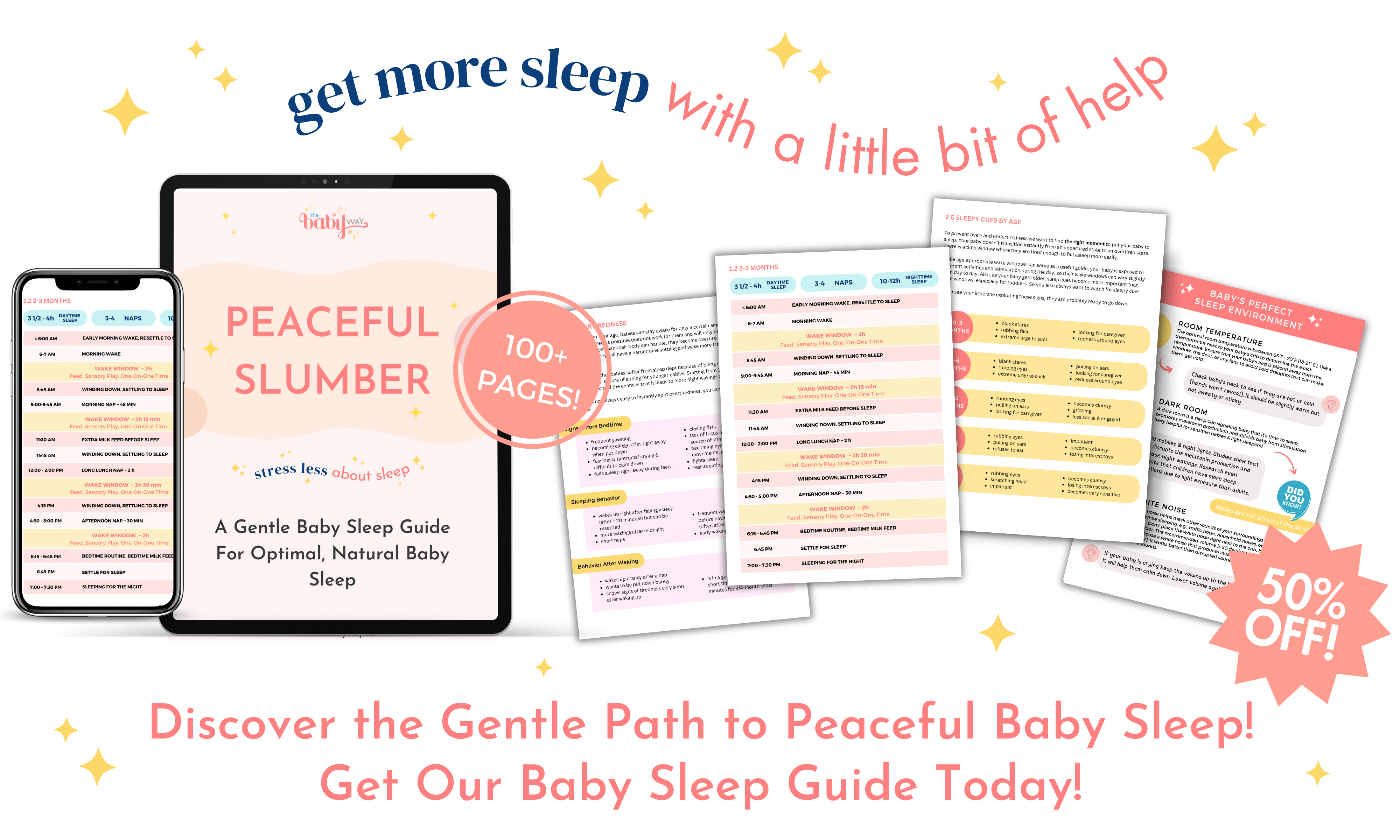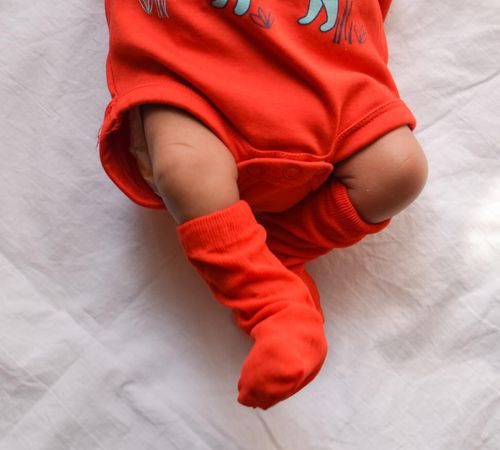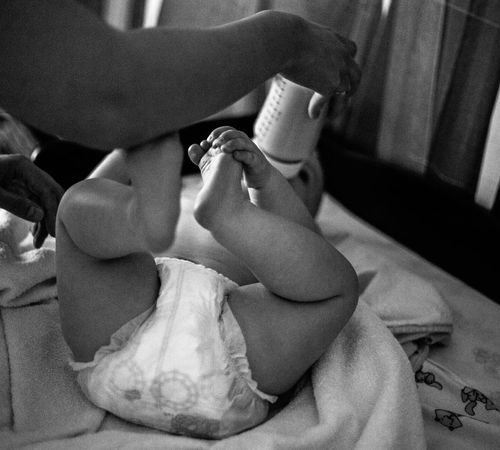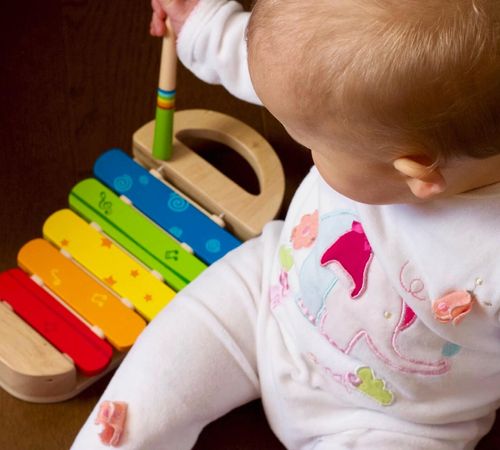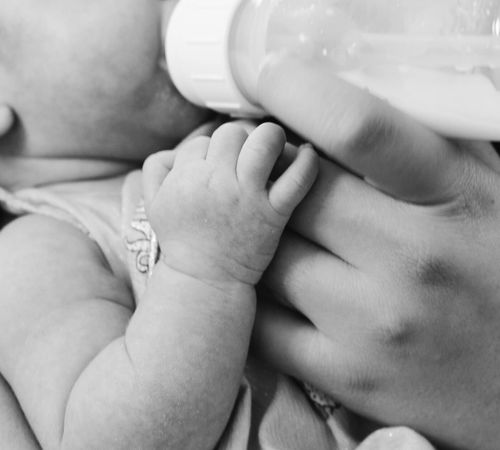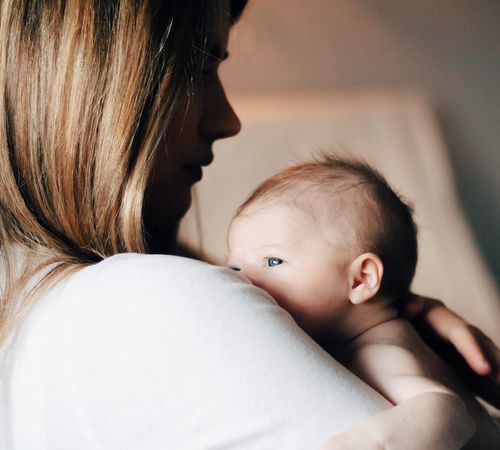If your baby has been struggling with short naps and you have searched the entire internet for the ultimate solution, then you might have read about the 'Wake to Sleep' method. So let's find out what this method is, when to use it and what it can really do to lengthen your baby's naps.
Every parent is looking forward to nap time, right? It's holy. It's sacred. A sleeping baby is our new happy hour. Well, if that baby would sleep...
But instead, naps have become frustrating and make you anxious because your baby only sleeps for 20 minutes.
20 minutes during awake time can surely sometimes feel like 2 hours. But during nap time, it feels more like 5 minutes.
For the first 1-2 weeks, my baby girl was practically sleeping all day long. Perfect! So I thought.
(By the way, never praise your baby's sleep out loud OR in your mind, because I swear that baby knows and things will change the very next day.)
Anyways, after those first two weeks, she would constantly wake up after 25 minutes ON THE CLOCK. I knew the minute she was going to wake. It was so frustrating for me because I didn't have a clue what suddenly happened.
So there I was, completely anxious, not knowing what to do with my baby's cat naps. Just like you, I crawled through the deepest corner of the internet to find a solution.
And then, the Wake to Sleep method came up. I researched some more and finally tried it. And after two weeks, my baby was having 2-hour naps. It was such a magical experience. It brings me to tears just looking back. Ok, I know I am being quite sentimental.
Why don't kids understand that their nap is not for them but for us? - Alyson Hannigan
But more importantly, it changed me and my emotional well-being. Having 2 hours entirely to myself was such a relief and had such a huge impact on my mood.
Cat naps are normal for babies, especially during the newborn phase. But they can also be drowning, and it's ok to try something about it.
So let's find out how the Sleep-to-Wake method can potentially help you achieve longer naps.
This article covers:
1. Before You Start With Wake to Sleep
Before you use the Wake to Sleep method, you need to ensure that your baby is waking due to habit and not due to an unmet need such as hunger, being hot or cold, or any other kind of discomfort.
There are different reasons why babies have cat naps, so before you start, make sure your baby is not waking due to any other reason.
If you want to know more about cat naps and other ways to lengthen your baby's nap, e.g., with healthy sleep habits, then check out the article below. It also mentions the Wake to Sleep method and other aspects you should consider.
Furthermore, starting your baby on a loose sleep schedule can be beneficial if you have not done so yet. This method also works with your baby's internal clock. So having a regular naptime can help this process along.
2. What Is The Wake to Sleep Method?
The Wake to Sleep method is a gentle sleep training approach with which you reset your baby's internal clock and teach them to connect sleep cycles.
I know that all parents talk about sleeping through the night, but the truth is that no one sleeps through the night without waking. We are all waking at night, you, I, and that cute baby of yours.
What happens is that we wake after a sleep cycle has ended. While we adults often move from one sleep cycle to the next without even noticing it, babies are not able to do so by themselves until they reach a certain developmental milestone.
A baby's sleep cycle can be 20-45 minutes long. When their sleep cycle ends, they arouse from sleep, unable to start a new sleep cycle. Also, once their sleep cycle comes to its end, they enter a light sleep stage called REM sleep, in which they can wake up easily from any disruption, such as light or loud noises.
All this can make consolidated sleep and long naps really difficult.
That's when the Wake to Sleep method comes in. With this method, you wake your baby before they wake up, resetting their internal clock's waking time. They arouse very slightly, and you can help them back to sleep by stroking or patting. They will then start a new sleep cycle.
The goal is that by continuing to do so every time they nap, their internal clock gets used to sleeping longer, and your baby will get the hang out of connecting sleep cycles.
This method is not only used to achieve better sleep during the day but also to stop early morning wakes or improve nighttime sleep. However, the latter two are a little bit more tricky, so I always suggest starting with naps first.
3. Is the Wake to Sleep Method For Me?
I love this method because it is a gentle sleep approach to improve your baby's sleep without crying. You don't have to use a conventional sleep training method that includes crying-it-out or even controlled crying. Daytime sleep can surely be improved with gentle methods, too.
A sleep consultant might tell you that short naps are the result of sleep associations or your baby's inability to self-soothe, but this is actually not the case. Short naps are totally a thing for young babies and even resolve themselves without any intervention at around 8/9 months. So no, you don't have to stop helping your baby fall asleep if you want to give this a try.

I used to rock my baby to sleep from day one, and I still had huge success with this method. I continued rocking her to sleep, and she would still have 2-hour naps.
So don't worry about any bad sleep association, and continue getting your little one to sleep any way that works for you. This still can work!
What you always have to keep in mind, though, is that, like with all gentle sleep training approaches, it will take more time and consistency. Your baby will need to get the hang of falling back asleep, and their internal body clock needs to adjust to a new sleeping length. I recommend trying it for at least one if not two, weeks to see results.
In my case, it took about 10 days of trying every day during the lunch nap. Then suddenly, from one day to another, my baby was napping for 2 1/2 hours straight.
4. Does The Wake to Sleep Method Really Work?
I know many families who had a lot of success with this method, including me. But in order for it to work, there are some things you should consider.
The Wake to Sleep method is targeted to break habitual waking. So if your baby is a habitual waker and constantly wakes at the same time or after the same amount of time during naps, then this method is for your baby.
However, if your baby wakes randomly after naps or at night, then your baby is not waking out of habit, and this method will probably not work.
Also, this approach works very well for newborns and babies up to 3 months. After 4 months, babies become more aware of their surroundings, and getting them back to sleep after waking them up can be more challenging.
Still, it doesn't necessarily mean that this method won't work for older babies or toddlers. It might just take a little more effort. But if you have a young baby and start doing this right away, you have a great chance that your baby will continue with good naps once you succeed.
You also want to make sure that your child is healthy and is not going through a sleep regression, separation anxiety, or any other developmental leap. While you can still try this method, you should be aware that during such phases, babies need more emotional comfort and are often more sensitive. It might be worth waiting for a little while.
5. The Wake to Sleep Method Explained Step By Step
This method was first introduced by Tracy Hogg in her book Secrets of the Baby Whisperer: How to Calm, Connect, and Communicate With Your Baby.
I will describe this method in 6 steps with a few alterations that have proven to make this work even better.
BTW, in my Baby Sleep Guide, you will learn not only about the wake to sleep method in more detail, but also get a settling guide to help your baby settle to sleep by themselves without letting them cry.
Step 1: Determine the length of your baby's sleep cycle
The first thing you should do is determine the length of your baby's sleep cycle. A sleep cycle can be 20-45 minutes long.
To find out the length, observe your baby's sleep behavior. Watch the clock, the time they fall asleep, and when they wake up. Do this for a couple of days to determine the approximate length of your baby's sleep cycle.
Step 2: Choose which nap you want to lengthen
Because this method works with your baby's internal clock and tries to set the circadian rhythm of your baby, it is very beneficial to choose one or two specific naps you want to lengthen.
The afternoon nap is usually the one your baby drops first, so there is no point in starting there. Your baby's lunch nap will usually become the longest, and the one your baby, will drop last at around 2-2 1/2 years. This would be a good starting point.
Then choose a nap time (you can be flexible +/- 30 minutes) and try to stick to it. But also make sure the wake window right before the nap is long enough so your baby can take a good long nap.
Step 3: Have a feed 20 minutes before the nap
While this method works well for newborns and young babies, going two hours without a feed can be a long time.
Don't force-feed your baby to get them to sleep longer. But try to have your usual feed around 20 minutes before your baby's nap time. This way, you can be sure that your baby won't be hungry.
Step 4: Start to arouse your baby from sleep
Now, you will do the tricky part. Since you now know the length of your baby's sleep cycle, you will arouse them from sleep before they wake on their own. You can do this by slightly stroking them.
Once you notice that they move around, try to get them back to sleep immediately. If it takes too long to fall back asleep, they might wake fully.
You can stroke your baby between their brows. This will trigger a reflex to close the eyes, and your baby will fall asleep faster. You can also use other methods like patting and stroking, whatever your baby prefers. Keep trying for a maximum of 15 minutes. If your baby does not fall back asleep, then try again the next time. If your baby starts crying, pick them up and try to get them back to sleep by rocking while also patting their little bum.
This step will be a process of trial-and-error, so don't be discouraged if you don't get your baby back to sleep the first few times. However, within a few days, you should get the hang of it, and your baby will also start to get used to this new way of sleeping.
If you leave the room, I suggest keeping the door open. Sometimes babies wake before you can wake them due to the noise of the opening door or the sudden light coming in. So before you go out of the room, leave the door a tiny bit open, so you can reenter without disturbing your baby.
Step 5: Watch out for the tricky second sleep cycle
Not many mention this, but the second sleep cycle can be tricky. You might think your baby just fell asleep, but suddenly after 5 minutes, they wake again.
This often happens when babies start the second sleep cycle. They first enter the stage of light sleep. And during this phase, oftentimes, they suddenly wake again.
I recommend you stay in the room for the next 10 minutes to make sure your baby does not wake up again. If they wake, you want to get them back to sleep as fast as possible.
Step 6: Continue this method for at least a week
You will continue with this method for at least a week. In my case, it took a bit longer than a week, so I personally would try 2 weeks.
If you stay consistent with this method, it should work very well.
6. What To Do If The Method Doesn't Work
Of course, there is always a chance that a sleep approach does not work for certain babies. Success also depends on baby's temperament, something we cannot control. Remind yourself that cat naps are a normal thing, and your baby might arouse because of the need for closeness.
If your attempt at this method fails, try to find out if there is another reason your baby keeps waking. Check the length of your baby's awake time. Finally, make sure you have set up a sleep-inducing environment.
Another thing you can try is a slight alteration of this method. If you are unsure about the length of your baby's sleep cycle and you fear that you may wake them during deep sleep, you can wait for them to wake. Stand next to the crib and literally wait for them to wake up, and then try to get them back to sleep as fast as possible, like the minute you see them move slightly. Getting them back to sleep after they woke on their own can, however, be a little bit trickier.
If all of that is still not helping, then take a break for 2 weeks, and then you can try again. Maybe your little one was not yet ready for this step.
But rest assured: even if you don't intervene in your baby's short naps, they will eventually start to take longer naps, and they will do this all on their own.
7. FAQs
How long does it take for the Wake to Sleep method to work?
The effectiveness of the Wake to Sleep method varies from baby to baby. Some babies respond within 1-2 weeks, while others may take a couple of weeks more. Consistency and patience are key when implementing this method.
Can the Wake to Sleep method be used for older children?
The Wake to Sleep method is most commonly used for infants up to 1 year. Older babies have more established sleep patterns and this technique may not work anymore. Additionally, older babies will naturally increase their nap length.
Can I use the Wake to Sleep method for the night?
The Wake to Sleep method works best for naps and to establish a more regular nap schedule. Babies sleep differently at night and might request feedings. While you can try this method to stretch the time between night feedings, it may not work for stretches longer than 2-3 hours.
Will my baby ever take longer naps?
Yes, of course! Short naps are a normal part of baby's sleep pattern. The younger the baby the higher the chances for short naps. As you little one grows those naps will naturally decrease in length, even if you don't intervene at all.
